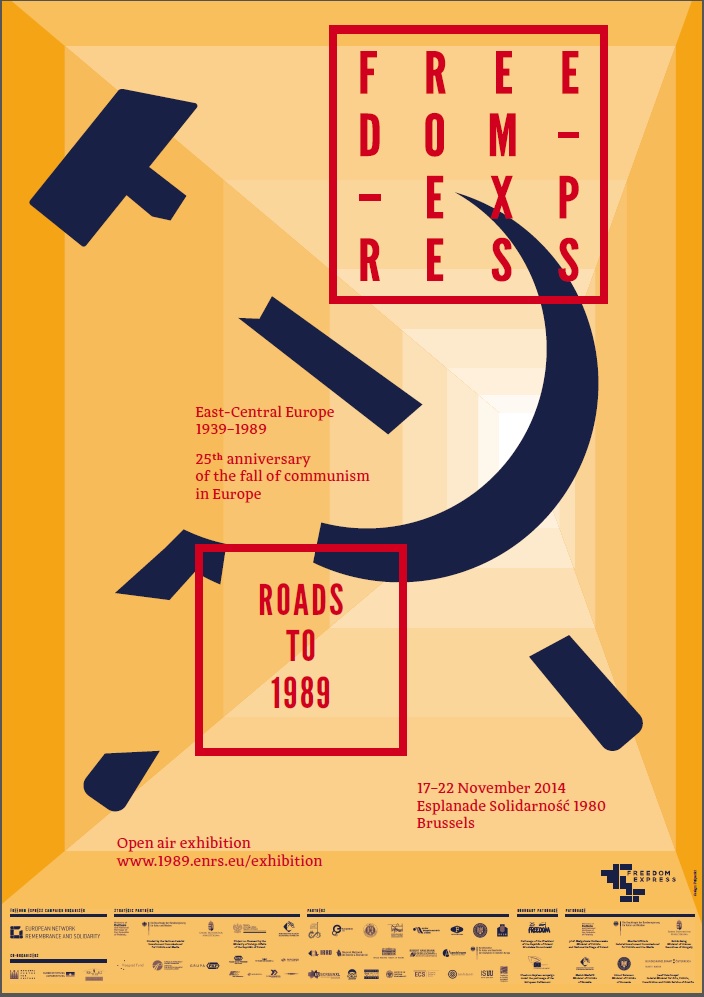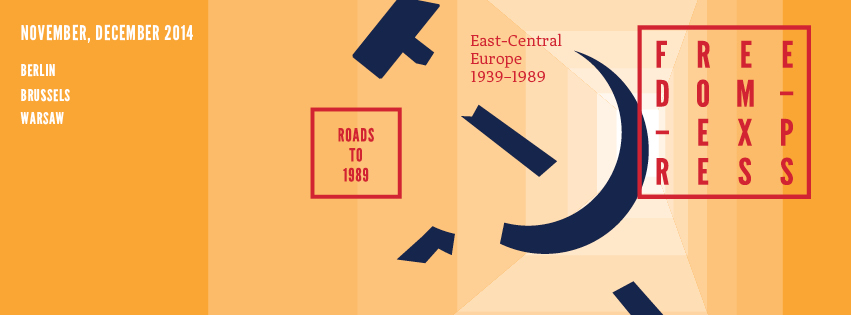On 17-22 November in front of the European Parliament in Brussels a unique outdoor exhibition entitled ‘Roads to 1989. East-Central Europe 1939-1989’ will be presented.
The exhibition, designed by historians associated with the European Network Remembrance and Solidarity, documents the complicated process through which this part of Europe regained its freedom from communist dictatorship. The exhibition is part of ‘Freedom Express’, a social and educational campaign organised by ENRS and the ministries responsible for culture in Poland, Germany, Hungary and Slovakia.
Official opening of the exhibition will take place on 18 November at 5 p.m. with the presence of President of the European Parliament Mr MartinSchulz and Member of the European Parliament, former Polish Minister of Culture and National Heritage, Mr Bogdan Zdrojewski.
The exhibition presented on the esplanade named after the Polish movement Solidarność – ‘Esplanade Solidarność 1980’ - concentrates on the various ways in which civil liberties were limited in the former communist bloc and on attempts made to regain them. It focuses especially on the question of what connects and divides remembrance of the events that preceded the fall of communism in Central and Eastern European.
Prof. Jan Rydel, chairman of the ENRS Steering Committee, explains: ‘The idea for this exhibition stems from the conviction that reflection on the 1989 transition in individual states becomes fuller and deeper when viewed in the pan-European context. Our aim is first and foremost to remind everyone of the processes that eventually led to the fall of communism in this part of Europe.’
The content of the exhibition reveals a story of the different faces of freedom. Individual parts of the exhibition are devoted to freedom of speech and expression, freedom of religion and belief, economic freedom and other themes. Mirosław Nizio, author of the exhibition’s architectural design, emphasises: ‘The geometrical setup of the pieces will make them fit perfectly with the landscape of city squares and arteries. It will create a zone within the city space designed for meeting the history. Archival photographs and texts are placed on illuminated cubes so the audience can view the exhibition also at night’.
The exhibition ‘Roads to 1989’ is also shown this year in Berlin (4-14 November) and Warsaw (28 November-15 December).

